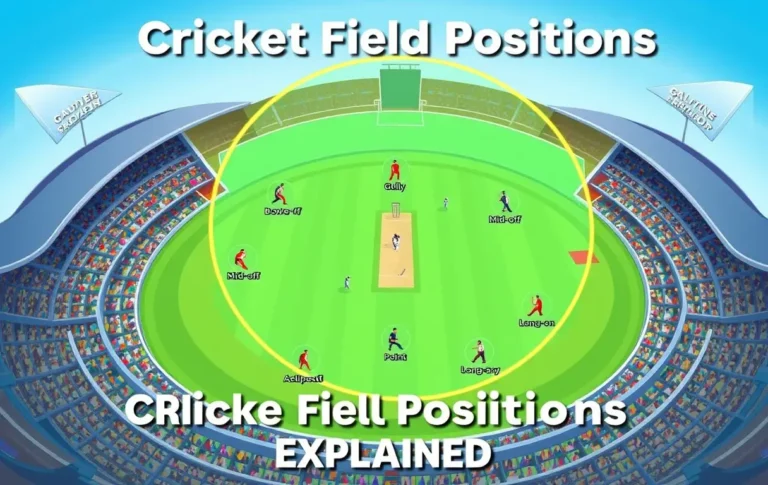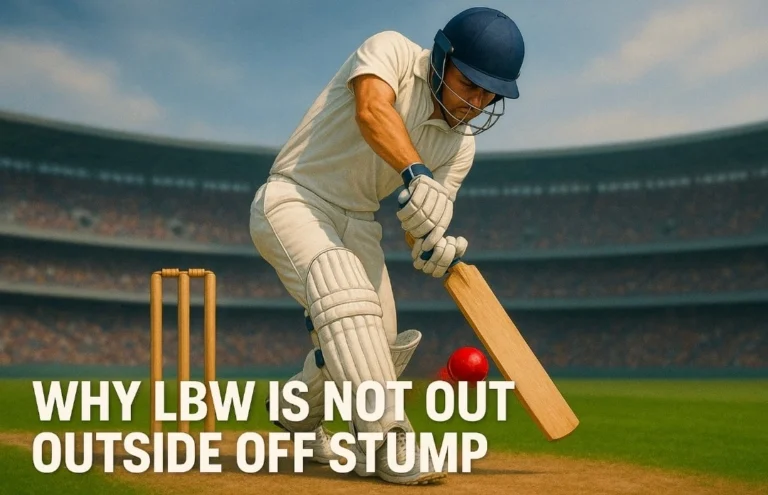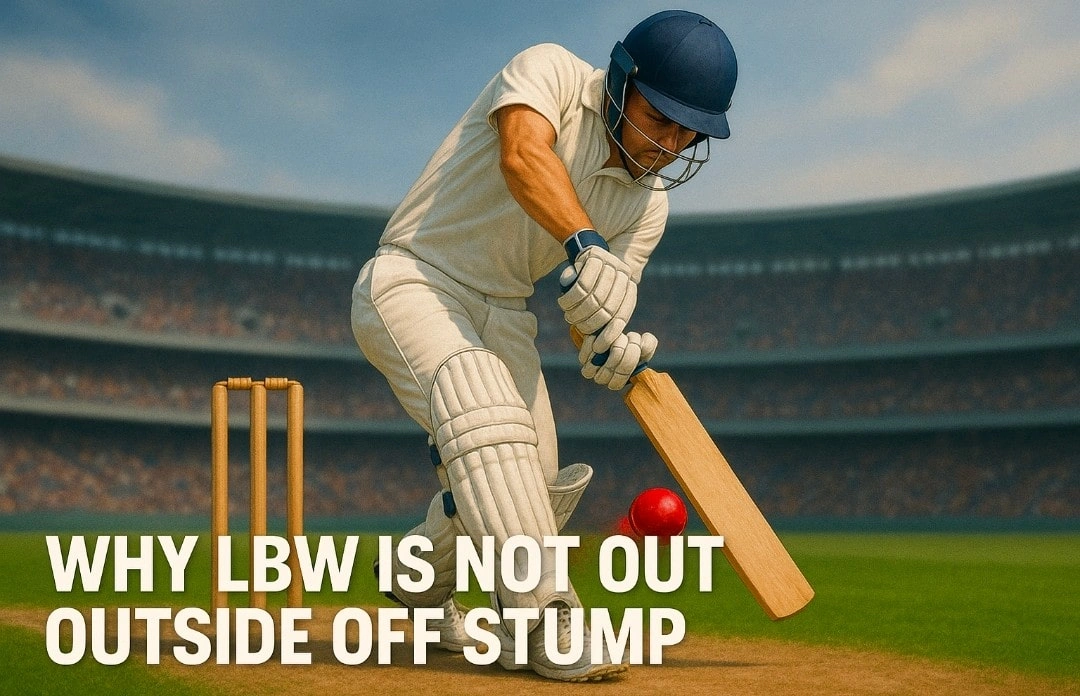
LBW Not Out When Hitting Outside the Line of Off Stump
If you’ve watched cricket for a while, you’ve probably heard commentators say, “That can’t be out, it hit him outside the line of off stump while he was playing a shot.” This sentence can be confusing for people who are new to the game. Why does it matter where the ball hits the batsman? And why does trying to play a shot make a difference?
In this blog, we’ll break down the LBW (Leg Before Wicket) rule in a way that’s easy to understand. We’ll focus on why a batsman is not out when the ball hits them outside the line of off stump while attempting a shot. Don’t worry if you’re not an expert—this explanation is meant for everyone who enjoys cricket and wants to understand the game’s finer details.
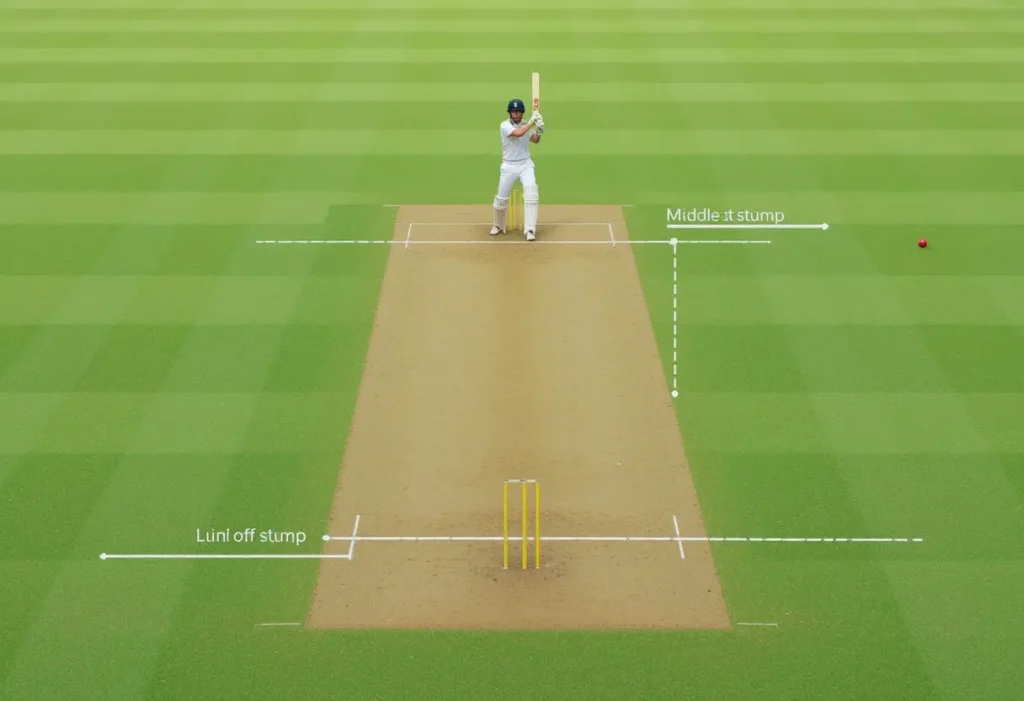
What is LBW in Cricket?
To understand the exception, we first need to understand what LBW means. LBW stands for Leg Before Wicket. It is one of the ten ways a batsman can be dismissed in cricket.
The basic idea: A batsman cannot use their body (usually the legs or pads) to stop a ball that would have hit the stumps. If they do, and certain conditions are met, the umpire can give them out LBW.
Let’s go through the main things that need to happen for an LBW decision:
- The ball must pitch in line with the stumps or outside the off stump.
- The ball must not pitch outside the leg stump.
- The ball must hit the batsman before hitting the bat.
- The impact (where the ball hits the pads) must be in line with the stumps.
- The ball must be going on to hit the stumps.
If all these conditions are met, the batsman can be out LBW. However, there’s a special exception, which we are going to explain in detail.
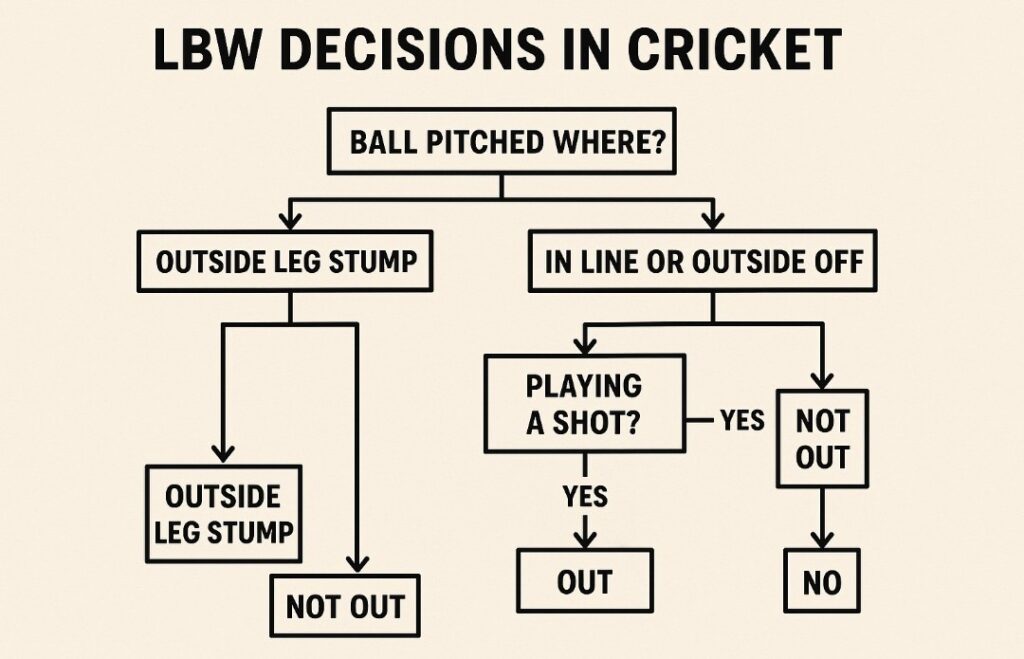
What is the “Outside Off Stump” Clause?
According to the official laws of cricket, specifically Law 36.1.3, a batsman cannot be out LBW if:
- The ball hits them outside the line of the off stump, and
- They are playing a shot.
Let’s break that down into simpler terms.
The off stump is one of the three stumps. For a right-handed batsman, it’s the stump furthest from their legs and closest to the bat. If a ball hits the batsman outside this line, and they are clearly trying to hit the ball with their bat, then they cannot be out LBW, even if the ball would have gone on to hit the stumps.
This is often called the “playing a shot outside the line” rule.
Why Was This Rule Introduced?
This part of the law wasn’t just made randomly. There are some very logical and fair reasons behind it.
1. To Protect the Batter’s Intent
Cricket encourages positive play. A batsman who is trying to play a proper cricket shot should not be punished if the ball brushes their pads outside the off stump. They are showing good intent, trying to score runs, and playing the game the right way.
2. To Prevent Negative Bowling
If LBW was allowed for balls hitting outside the off stump even when the batsman was playing a shot, bowlers would just keep bowling wide of the off stump. This would make the game boring, with very few scoring opportunities. The rule stops bowlers from overusing such tactics.
3. To Keep the Game Balanced
This rule keeps a balance between bat and ball. Batters get some benefit of the doubt when trying to play a shot. It’s fair because the batter is not just standing there; they are trying to hit the ball.
This balance is important because if cricket becomes too batter-friendly or too bowler-friendly, it loses its charm.
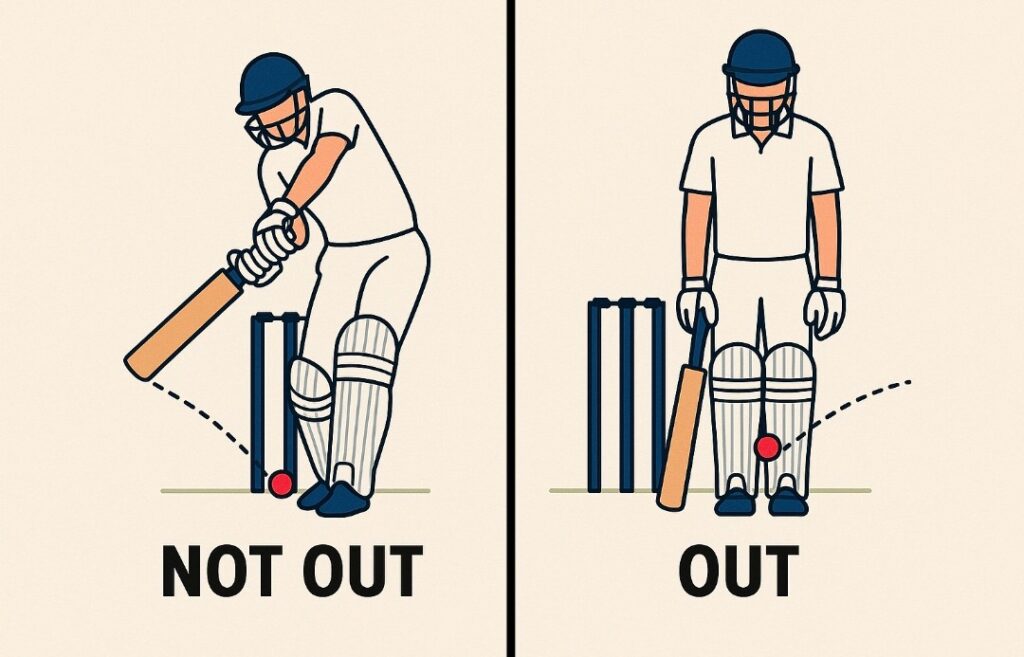
When Can LBW Be Given Outside Off Stump?
Now here comes the twist. There is one situation when a batsman can be out LBW even if the ball hits them outside the off stump. That is:
- If the batsman does not offer a shot.
Let’s explain this with an example.
Imagine a bowler delivers a ball that pitches outside off stump. The batsman just stands still and lets the ball hit his pads without trying to hit it. The ball is going on to hit the stumps. In this case, the batsman can be given out LBW because he did not try to play a shot.
So, the key difference here is intent.
- Playing a shot = Not Out (if impact is outside off stump)
- Not playing a shot = Can be Out (even if impact is outside off stump)
Simple Examples to Understand the Rule
Let’s look at two simple scenarios to make things clear.
Example 1: NOT OUT
- Ball pitches outside off stump.
- Batsman tries to play a cover drive but misses.
- Ball hits the pads outside the line of off stump.
- The ball is going on to hit the stumps.
- Result: Not Out because the batsman was playing a shot.
Example 2: OUT
- Ball pitches outside off stump.
- Batsman doesn’t offer a shot and just pads it away.
- Ball hits the pads outside the line.
- The ball is going to hit the stumps.
- Result: Out because the batsman didn’t try to play a shot.
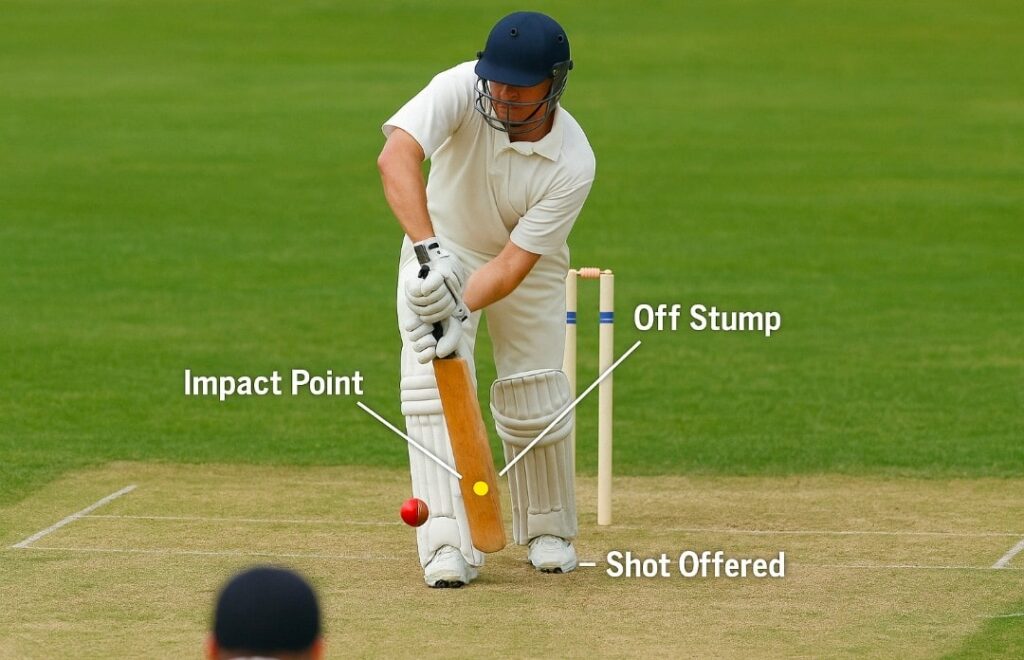
What Counts as Playing a Shot?
This is an important question. The umpire has to decide whether the batsman was really trying to hit the ball or just pretending.
A genuine attempt to hit the ball includes:
- Moving the bat toward the ball.
- Making a real swing to connect with the ball.
- Showing follow-through (not just lifting the bat).
Sometimes, players raise their bats without any intention to play a shot. Umpires are trained to judge these situations. If the shot is not convincing, they may treat it as “no shot offered.”
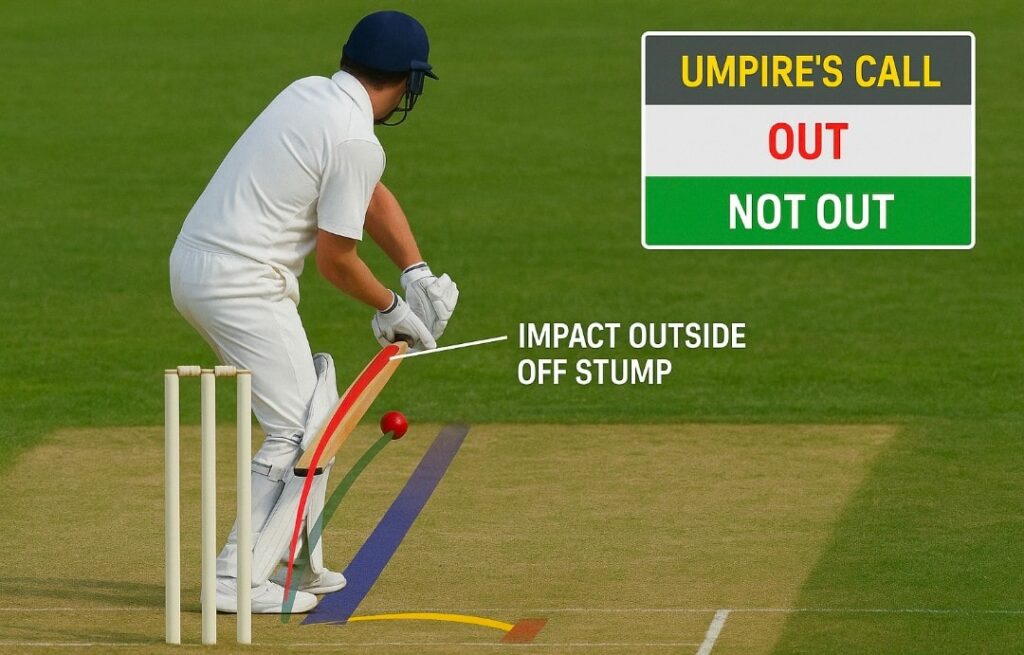
How Technology Has Improved LBW Decisions
Modern cricket has tools like DRS (Decision Review System) and Hawk-Eye. These help the third umpire see:
- Where the ball pitched.
- Where it hit the batsman.
- Whether it would have hit the stumps.
This technology has made it easier to apply the LBW rule correctly, especially in marginal calls. But remember, the final call on shot offered still lies with the on-field umpire.
Why Does This Rule Confuse People?
Many people who are new to cricket don’t understand the idea of the off stump and why it matters. Also, the idea that the batsman’s intent matters is unique. In most sports, only actions count. But in cricket, trying to do something the right way can save you.
It might feel unfair when a ball is clearly going to hit the stumps, but the batsman is not out just because they tried to hit it. But that’s the beauty of the game. It’s a mix of skill, strategy, and fairness.
Conclusion
To sum up, the LBW rule is one of cricket’s most complex but also most fascinating rules. It includes a lot of factors like where the ball pitched, where it hit, whether a shot was offered, and if the ball was going to hit the stumps.
The reason a batsman is not out when the ball hits them outside the line of off stump while playing a shot is to keep the game fair and encourage good, attacking cricket. It protects batters who are trying to play positively and stops bowlers from using negative tactics.
So next time you hear, “That hit him outside the line while playing a shot,” you’ll know exactly what it means and why it’s so important in the beautiful game of cricket.
